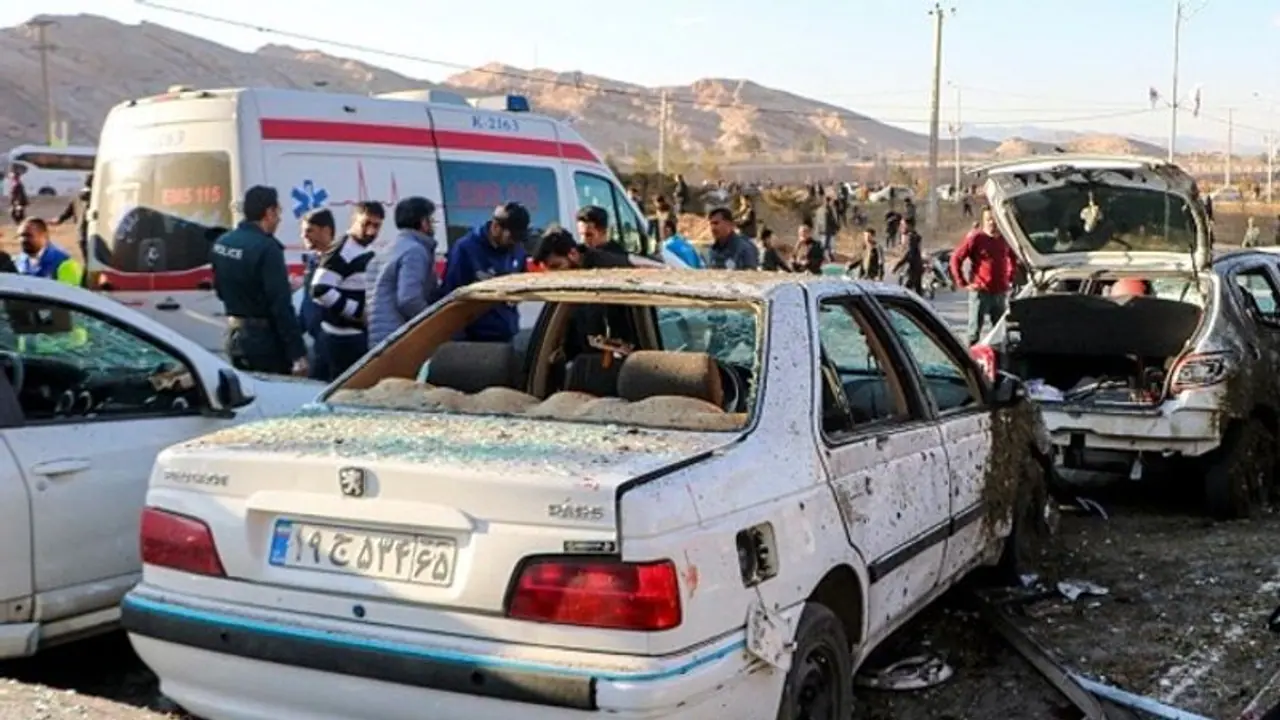On Wednesday, two bombs detonated within minutes of each other during a ceremony honoring a prominent Iranian general Qassem Soleimani who was killed in a 2020 US drone strike, according to Iranian officials.
On Wednesday, two bombs erupted in quick succession during a commemoration for a prominent Iranian general Qassem Soleimani, who was killed in a 2020 US drone strike, according to Iranian officials. The attacks claimed the lives of at least 103 people and left 188 others wounded. This incident unfolded amidst heightened tensions in the Middle East, with a focus on Israel's conflict with Hamas in the Gaza Strip.

No entity has immediately claimed responsibility for what appears to be the deadliest militant attack on Iran since the 1979 Islamic Revolution. However, social media users have blamed Israel and Mossad for the blast, which comes a day after Hamas leader Saleh al-Arouri was killed in Beirut blast. The explosions occurred in Kerman, approximately 820 kilometers southeast of Tehran, causing panic among the crowd fleeing the first blast as shrapnel scattered.
The gathering marked the fourth anniversary of the assassination of Gen. Qassem Soleimani, the head of the Revolutionary Guard's elite Quds Force, in a US drone strike in Iraq in January 2020. The explosions took place near his grave site as people gathered for the commemorative event.
Iranian state television and officials described the incidents as bombings, providing limited details initially. Ahmad Vahidi, the interior minister, reported that the first bomb detonated around 3 p.m., with the second exploding approximately 20 minutes later, causing more significant casualties.
A delayed second explosion is a tactic sometimes employed by militants to target emergency responders and amplify casualties.
Casualty figures, reported by Iranian state TV and the IRNA news agency, rose rapidly in the hours following the explosions. Iran faces multiple potential adversaries, including exile groups, militant organizations, and state actors, making it challenging to pinpoint responsibility.
While Israel has targeted Iran over its nuclear program, it has historically engaged in targeted assassinations rather than mass casualty bombings. Sunni extremist groups, such as the Islamic State, have carried out large-scale attacks in the past, but such incidents are less common in relatively peaceful areas like Kerman.
Iran has experienced mass protests, attacks by exile groups, and ongoing arming of militant groups over the years. As Israel conducts a war in Gaza and faces retaliatory attacks from Hezbollah and the Houthis, the region remains volatile.
Gen. Qassem Soleimani played a crucial role in Iran's regional military activities and became a national icon. His death in a US drone strike escalated tensions between the two nations. Soleimani's popularity grew as he aided armed groups, and his demise triggered significant public processions, including a fatal stampede at his funeral in 2020.
Until this event, Kerman had largely been spared from recent unrest and attacks in Iran. The city sits in the central desert plateau of Iran. The deadliest attack on Iran since the 1979 revolution was the 1981 truck bombing of the Islamic Republican Party's headquarters in Tehran, which claimed at least 72 lives.
In the broader context, Soleimani's death marked a critical point in the complex dynamics between Iran and the United States, particularly following the US withdrawal from the nuclear deal in 2018. The repercussions of that event continue to shape the region's geopolitical landscape.
